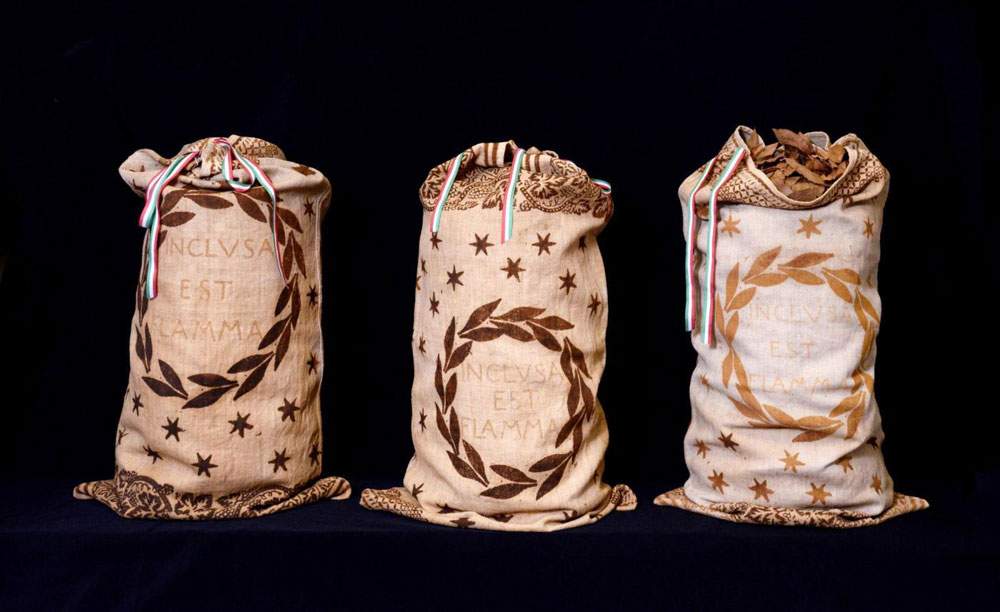Dante and d’Annunzio, this is the title of the exhibition that will open on Saturday, September 18 at the “d’Annunzio segreto” museum at the Vittoriale degli Italiani in Gardone Riviera, which can be visited until December 31, 2021.
The exhibition, organized in collaboration with the Istituzione Biblioteca Classense in Ravenna, aims to tell through unique objects episodes of the relationship between the Vate and the Supreme Poet. The exhibition is part of the celebrations of the Vittoriale’s first centenary (1921), which falls precisely in the year of the seventh centenary of Dante’s death (1321). The curatorship is by Giordano Bruno Guerri, president of the Il Vittoriale degli Italiani Foundation, and Benedetto Gugliotta, head of the Office for the Protection and Enhancement of the Classense Library.
The Classense Library holds Dante’s memories of Ravenna, the city where Dante Alighieri found refuge in the last part of his existence and where he died in 1321. 1321 and 1921, seven hundred years since the death of the Supreme Poet and one hundred years for the Vittoriale: two important dates that link two pivotal figures in Italian history and culture. But 1921, the year of Dante’s sixth centenary, was also the year in which Gabriele d’Annunzio, disillusioned by the disastrous conclusion of the Fiume enterprise and at odds with governmental and official Italy, orchestrated from his villa in Cargnacco on Lake Garda his personal tribute to Dante. Invited by the mayor of Ravenna as a guest of honor, the Vate refused at the last moment, but he sent the city three sacks filled with laurel on as many planes piloted by aviators of the Carnaro Squadron-one of which had accompanied him on the famous Flight over Vienna in 1918. The humble jute sacks were decorated by Adolfo De Carolis with Ursa stars, garlands and above all with the motto Inclusa est flamma(the flame is inside), dictated by d’Annunzio. The sacks carried , in addition to the laurel sign of glory and immortality, a symbolic flame intended to fuel the one burning in Dante’s tomb. The Vate thus established a parallel between the Ravenna flame and that of Apollo’s temple at Delphi, the heart of the Greek nation in classical times.
The sacks, along with many other relics, belong to the Dante collections of the City of Ravenna, which have been managed by the Classense Library since its inception. Among other works that will arrive at the Vittoriale are a sketch by Guido Cadorin for the Dante-themed decoration of the Church of San Francesco (1921), two handwritten albums containing the signatures of visitors to Dante’s tomb and the Classense Library - and among them those of d’Annunzio and Eleonora Duse - and an edition of Francesca da Rimini dedicated and donated to the city in 1902. The Vittoriale will enrich the exhibition with a woodcut of the Dantes Adriacus commissioned by the poet from Adolfo De Carolis, a bust of Alighieri made by sculptor Onorio Ruotolo and donated by the Italians of New York, and documentary and printed materials from the Vittoriale Archives and Libraries, including the manuscript Per la dedicazione dell’antica Loggia fiorentina del grano al novo culto di Dante, drafts and notes for the Francesca da Rimini the monumental edition of the Commedia illustrated by Amos Nattini and the one printed by Leo S. Olschki in 1911, on the occasion of the celebrations for the fiftieth anniversary of the Unification of Italy.
“D’Annunzio reveals the very strong bond and sense of commonality he felt he had with Alighieri in a note, also on display,” explains Vittoriale president Giordano Bruno Guerri, “where the poet of Alcyone claims that La poesia italiana begins with 200 verses of Dante and-after a long interval-continues in me. Gabriele d’Annunzio considered Dante a ”Relative,“ like Michelangelo, in affinity and artistic greatness. It was his way of honoring the Supreme Poet, to whom he wanted to send, for the sixth centenary of his death, three bags of laurel from the Vittoriale. I am particularly happy about the temporary return to d’Annunzio’s home of those sacks, which we will honor with newly harvested laurel in our park.”
“Ravenna is already configured in the late eighteenth and early nineteenth centuries as the capital of Dantismo, that is, of that real secular cult paid to the Poet,” says Benedetto Gugliotta, co-curator of the exhibition. “Numerous is the host of people who wished to leave a trace of their passage at Dante’s tomb by signing the visiting registers then placed within the tomb, and among them was d’Annunzio in 1901 and 1902. But it was in 1921 that, although absent from the celebrations for the Secentenary of Dante’s death, to which he had been invited as guest of honor, the Vate produced an original and memorable ”performance.“ Decisive, then, was the contribution of Adolfo De Carolis: the laurel sacks, in this sense, are the tangible fruit of the meeting between two geniuses.”
Image: Adolfo De Carolis - Gabriele d’Annunzio, votive sacks with laurel leaves (1921; Ravenna, Classense Library, Dantesca Collection).
 |
| An exhibition at Vittoriale celebrates Dante and d'Annunzio, pivotal figures in Italian culture |
Warning: the translation into English of the original Italian article was created using automatic tools. We undertake to review all articles, but we do not guarantee the total absence of inaccuracies in the translation due to the program. You can find the original by clicking on the ITA button. If you find any mistake,please contact us.